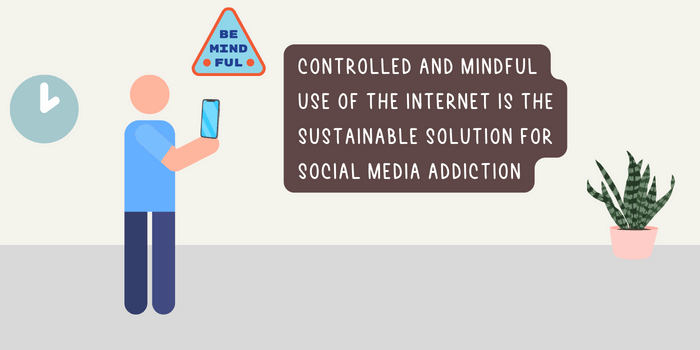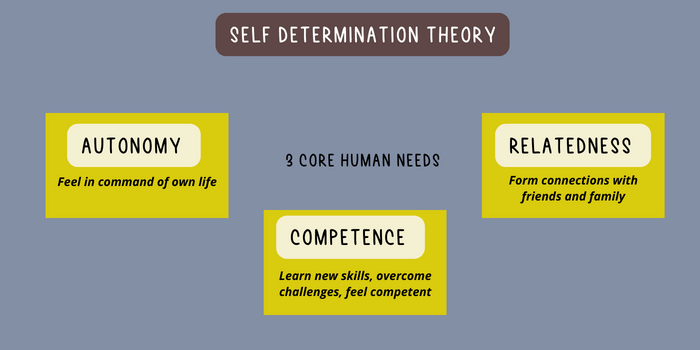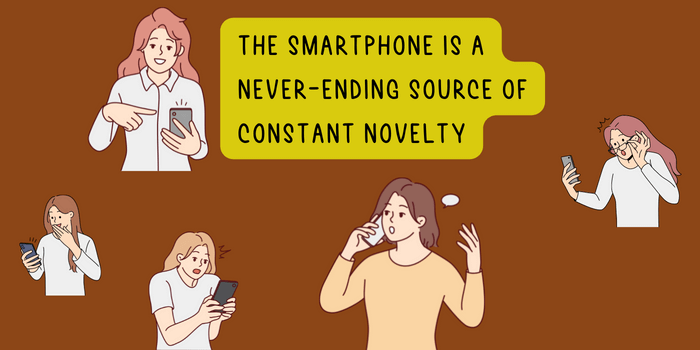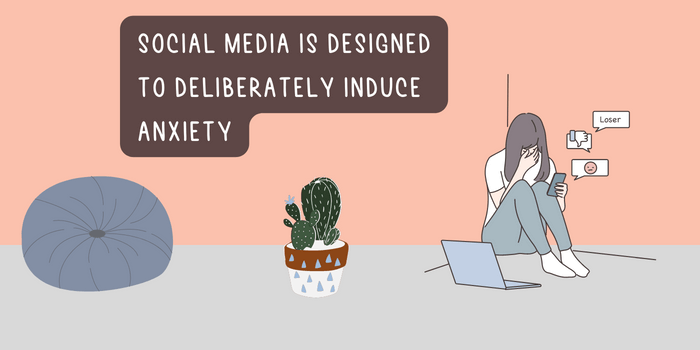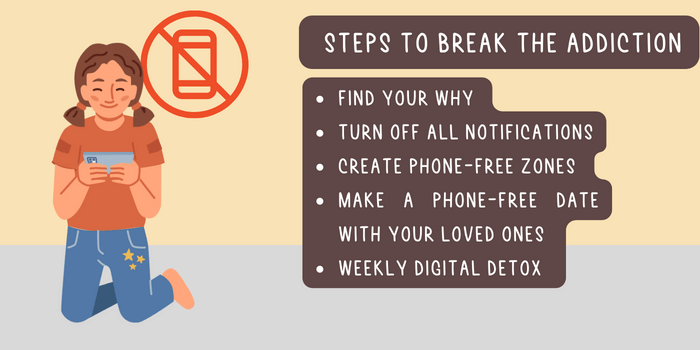Johann Hari, a British-Swiss writer and journalist, was tired of always being wired.
So he booked himself a cozy little room by the beach and banished his smartphone and computer. He would stay there for 3 months, decompressing and regaining his ability for deep thinking.
But as he got back to his regular life in Boston, he soon found that within a few months, his screen time was back to 4 hours a day. His attention was beginning to break again.
Hari was convinced he had cracked the code of attention, but he could not sustain it.
What went wrong?
When people wanted to #DeleteFacebook
In March 2018, a Canadian data consultant called Christopher Wylie blew the whistle on a political consultancy firm called Cambridge Analytica, which worked for the Trump campaign.
The firm had purchased Facebook data of 50 million Americans without their consent or knowledge, to build what Wylie called “Steve Bannon’s psychological warfare tool” to help win the 2016 election for Trump.
As the scandal broke, shocked Americans started boycotting Facebook in large numbers, deleting their Facebook profiles. The hashtag #DeleteFacebook trended on Twitter.
However, just one year later, despite nearly half of social media users having a negative opinion of Facebook, they were still using the platform [1].
Why are people not able to give up Facebook in spite of thinking poorly about it?
Complete abstinence from social media is not a sustainable solution
Social media is so deeply integrated into people’s lives that it is hard to come out of its ecosystem.
While we may have apprehensions about the negative aspects of Instagram or Facebook or Twitter, the fact is that we’re hooked to the platform.
What is needed is thoughtful behavioural change and rewiring of our dopamine-driven feedback loops.
Complete abstinence may be useful for drug or alcohol addiction, but for social media, the most desirable outcome is controlled and mindful use of the internet.
You don’t have to give up your smartphones, but you must have strategies to set limits and to follow them.
Are you addicted? Check your smartphone compulsion
Most of us feel that we’re not “addicted,” but the truth is we do not realize how much time we spend glued to our screens.
A 2021 study revealed that people use their smartphones much more than they think they do, with an average screen time of close to 6 hours.
But if I ask you to estimate the time you spend on your phone every day, you may say that it’s roughly about 2 hours.
The first exercise that our Undistractable — Digital Detox bootcamp participants do is track their normal daily smartphone usage for a few days. They are routinely surprised by how much more the number is than what they imagined.
Smartphone Compulsion Test
Apart from tracking your daily screen time, you can also use the Smartphone Compulsion Test by Dr. David Greenfield, a psychiatry professor who founded the Center for Internet and Technology Addiction in the US.
If your score is 5 or above, then you are in the territory of problematic or compulsive smartphone usage.
Readiness for change – the first step
An important requirement for lasting change is that you must feel an internal motivation to make the change.
In his book, Irresistible, Adam Atler explains that we know addiction is terrible, but it also brings a sense of some personal benefit, misguided as it may be. The key to the puzzle is understanding the benefits of the behaviour, so you can address the underlying needs that are addressed by the behaviour.
Say for example, you spend a lot of time on Instagram. The benefit could be that you feel connected to your friends and you feel entertained. When you get hearts and comments on your own posts, you feel validated. That’s how it starts.
The key to changing the behaviour then, is to figure out a more positive way of being connected to others and feeling validated.
Self Determination
The best results in behaviour change accrue from your own self-determination. External constraints or rewards may work temporarily, but without a fundamental change, the behaviour soon bounces back to the earlier state, soon after the external force is removed.
This is why app blockers and other externally imposed constraints have only a limited impact. They are useful of course, but they are not the solution to smartphone addiction.
Atler describes in his book, a dominant theory in motivation research – Self-Determination Theory.
We have 3 core human needs:
- Autonomy (the need to feel in command of our life)
- Relatedness (the need to form connections with friends and family)
- Competence (the need to learn new skills, overcome challenges, and feel competent)
Addictive behaviours, while temporarily soothing psychological discomfort, also tend to hinder one or more of these needs.
For example, if through contemplation you reach the insight that Instagram is destroying your productivity (competence) and compromising relationships with your family (relatedness), then you will see this hindrance clearly.
Once you reach this understanding, rather than feeling powerless or indifferent about the behaviour of excessive smartphone usage, you will feel encouraged to create a lasting change.
Check your readiness score
Psychologists use a technique called motivational counseling to help people make changes in longstanding behaviours. This includes something called Readiness Ruler which assesses a person’s readiness for change.
From the Readiness Ruler, here’s a question to ask yourself, say to modify your Instagram usage behaviour.
On a scale of 0-10, how ready and motivated are you to change your behaviour? (0 – not ready at all; 10 – all fired up)
A high score indicates that you understand and admit your Instagram use is making you unhappy. A low score means that you don’t feel the problem is severe enough to warrant a change.
From this point, you can ask yourself other open ended questions like the following to uncover your thoughts and motivations further.
What personal benefits do you get from using Instagram?
How does your Instagram use affect your mental wellbeing?
What are the ways in which you could do things better?
This is a non-judgmental way to explore your deep feelings and thoughts. It’s your life, and you are curiously exploring if there is anything you can do to make it better.
Prochaska and DiClemente developed the Stages of Change Model, after observing smokers who quit smoking on their own. On studying why, they determined that it was because the smokers were “ready” and thus made intentional changes to their behaviour.
The model says that changes in behaviour is a continuous and cyclical process. The most appropriate behavioural change techniques must be applied as required by the stage the person is in.
Being ready is the necessary first step for lasting behavioural change.
Building sustainable digital habits
At HabitStrong, our Undistractable — Digital Detox bootcamp has been designed keeping in mind the core principles of behavioural change and habit psychology.
It is a 4-week bootcamp where we take you through specific steps in a systematic manner, giving you enough time to observe and understand your habit loops, make small changes, and then help you make these changes permanent.
The accountability built into the program helps you stick to the process and keeps you on track. If you are serious about creating a fundamental change in your digital habits and regaining your ability for deep focus, then this bootcamp is your best bet.
Below are a few things you can do on your own as well.
Understand your dopamine responses
Here are a few dopamine responses that are keeping you addicted. The better we understand why we behave the way we do, the easier it will be to break the pattern.
1) We are wired to seek novelty
Novelty seeking is an evolutionary survival mechanism that allowed us to explore and discover better pastures to live in [2]. It is mediated by dopamine, and thus forms a strong dopamine-driven feedback loop [3].
The smartphone is a never-ending source of constant novelty. There is always something new on your social media or news feed.
2) We love unpredictability
In the earlier article we talked about how unpredictable rewards keep our dopamine levels high in anticipation.
When we check our phone 10 times, we may see one message. This intermittent reward spikes our dopamine and makes us want to check our phones more frequently.
3) We are fascinated by cause and effect
Here’s a baby expertly swiping through an iPad and delighted by what she can make it do, but flummoxed when a magazine does not respond the same way.
We never outgrow this fascination for bending something to our will. We touch a link on our phone and a web page opens. We send a message and it zips through with a satisfying whoosh. Send a payment and we hear a ka-ching.
These reinforcements give us a feeling of being in control, and make us want to be on our phone all the time.
4) We want to be loved
We are social creatures. We desperately want to belong, to be acknowledged, to be seen, to be praised, and to be loved.
When Facebook launched the Like button, it completely changed the way we connected with our friends online. Soon we wanted to get “likes” for our posts, and showered “likes” on our friends to show appreciation.
Today, a post without a like or a heart feels like ostracizing and public condemnation.
5) We want to avoid anxiety at all costs
Anxiety is useful to us evolutionarily. If we didn’t get anxious coming face to face with a lion, we would get eaten.
Social media is designed to deliberately induce anxiety with notification sounds, red circles with the number of messages, trending hashtags etc. We worry about missing out on what’s happening, or we have FOMO – Fear Of Missing Out.
6) We are scared of boredom and solitude
A 2014 study found that volunteers would rather administer mild electric shocks to themselves rather than be alone with their thoughts for 15 minutes.
We have lost the ability to tolerate boredom or solitude, so we will do whatever it takes to keep us from experiencing those.
What better to keep boredom at bay than a smartphone?
Preliminary steps to break the addiction
Over the next few days, do the following to start your journey of digital behavioural change.
1) Find your why
The motivation to change has to come from within you.
Think deeply about how your life is negatively impacted by your smartphone usage. Visualize how your life would change for the better once you build a healthy relationship with your phone.
Write it on a piece of paper and stick it on a wall where you can see it every day. Take a picture of it and put it on your lock screen. Better yet, ask someone you love to hold the paper, take their picture and put it on the lock screen.
This will create an emotional response and make you pause and think every time you reach for the phone.
2) Turn off all notifications
Every time we hear a ping, it’s a cue that spikes our dopamine levels in anticipation. We then get the insatiable urge to pick up the phone.
Get rid of the temptation altogether by turning off your notifications. By this simple act alone, you are taking back a little bit of control over your digital habit. Now, you decide when you will pick up the phone, rather than respond like Pavlov’s dog at the sound of the notification bell.
3) Create phone-free zones
A phone-free zone is a place where you do not use your phone. Start with the dinner table and bedroom. Banning phones at the dinner table will bring family members together. Talk about your day rather than stare at your phone screens. Banning phones from the bedroom will help you sleep better.
You can even extend the phone-free zone to your study or work area. Start treating your mobile phone like a landline. Put your phone in a fixed place, so you have to physically walk over to it to use it.
4) Make a phone-free date with your loved ones
We reach out to our phones often for a feeling of social connectivity, but ironically it also kills deep genuine relationships.
Plan a phone-free dinner date with your friends and family members. Leave your phone in the car or keep it on flight mode, out of reach. Ask meaningful questions that will bring you closer. Do something fun so you retain positive emotions from the experience.
Once you start connecting with people at a deeper level, you will stop looking to your smartphone to give you that social connection.
5) Weekly digital detox
Set aside one day of the weekend for digital detox or digital sabbath. For a full 12 hours, do not use any device with a screen.
It’s just one day of the weekend, but you will see how difficult it can be to fight our ingrained habits like browsing the news, checking email, Facebook, Twitter or other social media, or lounging on the couch chilling with Netflix.
When you start, you will be tempted to constantly reach for your phone, but don’t give in. Plan for the weekly detox in advance, inform loved ones, and plan activities that will fill your time without a screen.
When we play with our children, read a book, or immerse ourselves in meaningful work, we are taking back what rightfully belongs to us.
Staying on Track
Once we begin to get a grip over our digital habits, it is also necessary to take active steps to maintain our new phone usage pattern. This is where most of us fail.
In our Undistractable — Digital Detox bootcamp we show you the systematic process to first identify your current habit loops, break them, replace them with new positive habits that put you in the driver’s seat, and then how to stay on track. You will learn how to use your smartphone mindfully.
In the next article, we will talk about that.
***
Sources
[1] https://www.prnewswire.com/news-releases/nearly-half-of-social-media-users-view-facebook-negatively-after-cambridge-analytica-but-many-still-use-the-platform-new-survey-finds-300819164.html
[2] The Biogeographic Origins of Novelty-Seeking Traits
https://www.econstor.eu/bitstream/10419/105054/1/V-366-14.pdf
[3] Costa VD, Tran VL, Turchi J, Averbeck BB. Dopamine modulates novelty seeking behavior during decision making. Behav Neurosci. 2014
https://www.ncbi.nlm.nih.gov/pmc/articles/PMC5861725/

